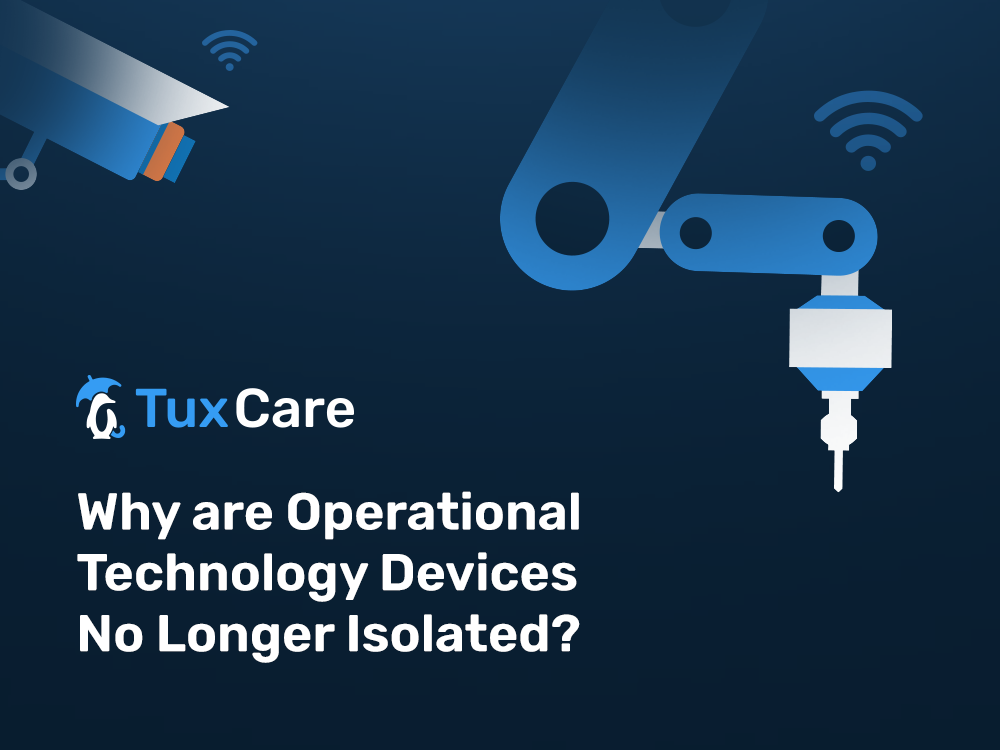Why Are Operational Technology Devices No Longer Isolated?
Gone are the days of Operational Technology (OT) being distinctly separated from IT. With the need of constant monitoring and tracking of the physical assets, OT has grown to be deeply connected to IT and – as a result – the rest of the internet.
As OT and Industrial Control System (ICS) networks become more connected to the outside world, there has been a continuously growing risk of attacks against critical infrastructure. Now, Operational Technology assets are just as risky as IT has traditionally been.
This blog post explores the reasons that Operational Technology is no longer isolated and how organizations can best approach vulnerability management with these increasingly connected assets.
What are the Differences between OT, IT, IoT, and IIoT?
OT contrasts with IT, or information technology, which specializes in data processing systems. IT systems focus on telecommunication and managing OT applications, whereas OT systems interact directly with the physical world. In other words, OT networks connect physical machines while IT networks communicate data.
The Internet of Things (IoT), on the other hand, refers to standard electronic equipment that’s connected to the Internet — from ordinary light bulbs to medical devices. IoT devices exist in a more broad sense, whereas OT devices serve more industry-specific monitoring roles.
Real-time monitoring is a vital function required for all OT and IIoT devices. OT security systems lack traditional IT adaptive controls. More organizations plan to deploy IoT and Industrial IoT (IIoT) projects as greenfield deployments to leverage better adaptive security controls.IIoT devices can monitor industrial processes remotely, but OT cannot.
OT-IT Convergence
Traditionally, a network between IT and OT was separated. The older version of OT software runs more risk of being compromised. But, as Operational Technology systems could not connect to the corporate network, there were constant challenges for the production system.
Many OT systems continue to be closed-looped, even after business requirements change. Eventually, however, as needs evolve, organizations typically make the decision to increase the connectivity of OT and ICS environments.any utility and manufacturing firms opt to align their security posture strategies around industry 4.0 and NIST SP 1800-10 frameworks, which dictates how they proceed.
Security Updates and Patching are Critical for OT Devices
Just as OT devices have developed, so must manufacturers’ approach to identifying vulnerabilities, security patching, and risk mitigation.
While recent OT innovations increase efficiency, lessen human intervention, reduce costs, and link disparate parts of the business, they also introduce new security vulnerabilities.
Because of the demand for digitalization, these formerly separated systems are now exposed. Attackers are increasingly targeting advanced manufacturing systems, and the ability to affect or shut them down provides them tremendous power.
OT environments have a lot of diversity in systems that OT industrial asset owners need to work with. And the job becomes even more complicated when ICS, such as DCS, SIS, programmable logic controller (PLC), etc., are installed by multiple vendors in the OT environment. Therefore, a practical patch management approach is essential to identify vulnerabilities and reduce risk to an acceptable level before attackers find them.
Live Patching Critical Hosts and OT/ICS Devices
The challenge in the legacy OT/ICS platforms is that we cannot take many of these systems offline for a maintenance window. Fortunately, with live patching technology from TuxCare, connected devices and intelligent factory ecosystems can automatically receive the latest Linux security patches without needing to perform system reboots or schedule maintenance windows.
TuxCare’s legacy of rapid, automated IT security patching has extended into the OT/ICS market. By offering live patching of critical-based Linux operating systems, open-source databases, and critical software libraries without requiring reboots, SecOps requirements can be more easily fulfilled within connected factories.
With TuxCare, organizations can keep their devices secure without taking them out of production. Moreover, OT/ICS security teams can automate taking new patches through staging, testing, and display on all popular Linux distributions.
On top of automating the deployment of security patches for OT/ICS devices, TuxCare features flawless interoperability with vulnerability scanners, security sensors, automation, reporting tools, and our ePortal management platform. This dedicated private patch server runs inside your firewall on-premises or in the cloud. TuxCare is the only provider that can live patch virtually all vulnerabilities in kernels, shared libraries, virtualization platforms, and open-source databases across all popular distributions.



 Documentation
Documentation Login
Login



